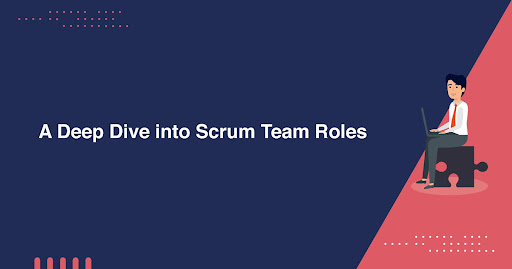The success of Agile Project Management has led to its adoption across many industries. Scrum has emerged as a leading framework for managing complex projects and delivering valuable products. But this success does not depend on only following a strict set of processes; all professionals may have questions: “What makes Scrum really work? “. It’s truly because of people and their roles.
Many believe that Scrum only belongs to Software developers and programmers; no, it’s not. It’s built for everyone who values teamwork, adaptability, and continuous improvement in solving complex problems. In this blog, we will take a deep dive into these key pivotal roles and how they play as the ultimate catalyst for project success.
What is a Scrum Team:
A Scrum Team is usually small, being cross-functional & self-managing as their characteristic, generally consisting of 10 or fewer members all working together towards a common goal to deliver a product increment within a set timeframe (time-boxing).
This Scrum Team has three leading roles:
- Product Owner
- Scrum Master
- Developers
How Scrum Team Differs From a Traditional Team:
| Aspect | Scrum Team | Normal Team (Traditional) |
| Structure and Roles | A scrum team has three main roles.
Each has distinct accountabilities: a Product Owner, a Scrum Master, and Developers. |
Traditional Teams are organized in a hierarchical order.
A project manager who assigns tasks to specialized individuals or teams (e.g., design, development, QA). |
| Process | Work is finished in short, time-limited steps called sprints. It lasts generally 1 to 4 weeks. At the end of each sprint, the team is responsible for delivering a workable part of the product. This cycle continues until the complete functional product release. | This type of project runs through a linear, sequential process (called the Waterfall). Each phase has the following sequences: requirements gathering, design, and testing. One phase must be completed before the next one begins. |
| Planning and Flexibility | Detailed planning (Sprint Planning) happens at the beginning of each sprint. Even in the middle of the process, the team can adapt to changes through revisions. | A detailed plan was created at the start of the project. Once the project commences, changes are difficult and expensive to implement while the project is underway. |
| Decision-Making and Management | Teams are self-managing and decide for themselves how to do the right work. A Scrum Master is not only a manager, but he acts as a coach, a servant leader. | A project manager is solely responsible for assigning tasks, monitoring, and decision-making for the team. |
| Accountability | The entire scrum team is totally accountable for the outcome of the sprint. | Accountability rests with respective team members for tasks allocated to each, and the project manager only for the overall project. |
| Communication | Daily standup meetings happen every day. So communication is frequent. | Communication is frequent, occurring through status reports and is more formal. |
Scrum Team: Structure, Roles:
Product Owner:
The PO is primarily responsible for increasing the product value. But not solely to coordinate with the team to achieve this. Also defines and prefers the product backlog (priority list of the tasks), and ensures that the backlog is transparent, visible, and easily understood by team members and stakeholders.
| The Product Owner decides what to build and why. |
Scrum Master:
Scrum masters act as a servant-leader, facilitator, and coach for the team members. His primary duty is to ensure every team member clearly understands and follows Scrum principles and practices across the work. He is an obstacle remover and unblocker for the development team. Ultimately, he coaches the team as self-organizing without depending on anyone in a crucial team.
| Scrum Master: Acts as a coach, helping the team follow the Scrum process smoothly. |
Developers:
Many people misunderstand that this role is like a software developer; that’s not the case. Developer here means the group of people in the Scrum Team consisting of a variety of specialists, such as testers, designers, and software developers, who collaboratively work to build the product. This team has characteristics of self-managing, which means they decide how best to accomplish their work.
| Development Team: The people who design, build, and test the product. |
What Happens in the Absence of a Scrum Team? How to Overcome These Challenges:
Without a Scrum Team, the project is struggling with delays, confusion, and low quality. Your organization can overcome with Professional Scrum Master training, teaching effective facilitation, obstacle removal, and coaching, enabling teams to self-manage and deliver value.
Bottom Line:
The scrum team’s power comes from its three dedicated roles working in cooperation. The product owner decides the “what,” the developers build it, and the scrum master guides the process. This structure encourages accountability, adaptability, and collaboration, transforming complex challenges into successful, valuable products.




